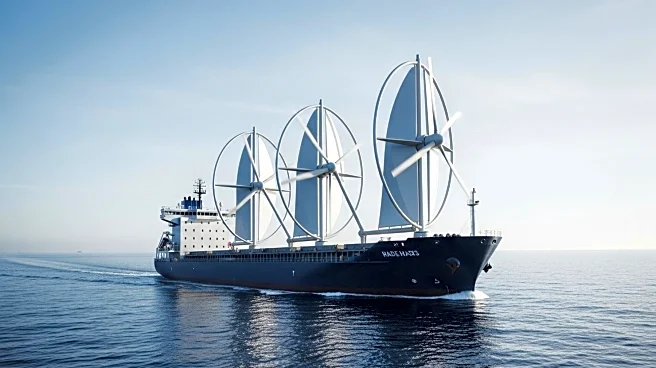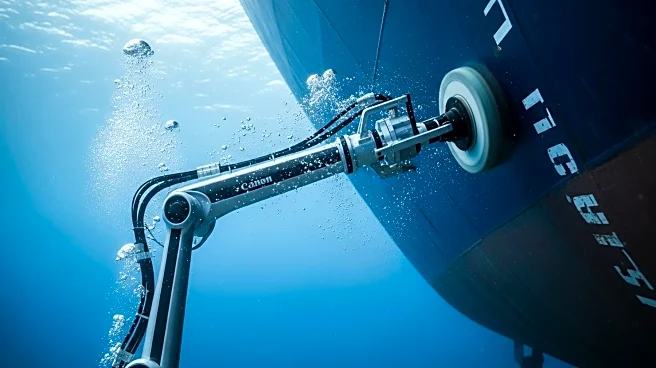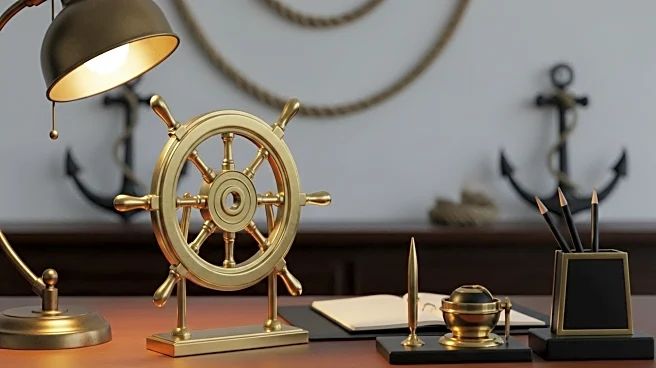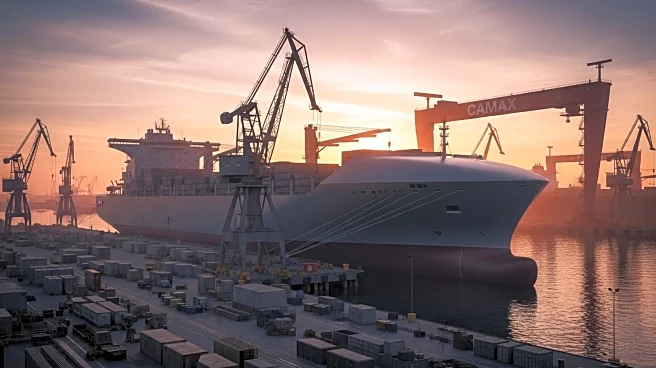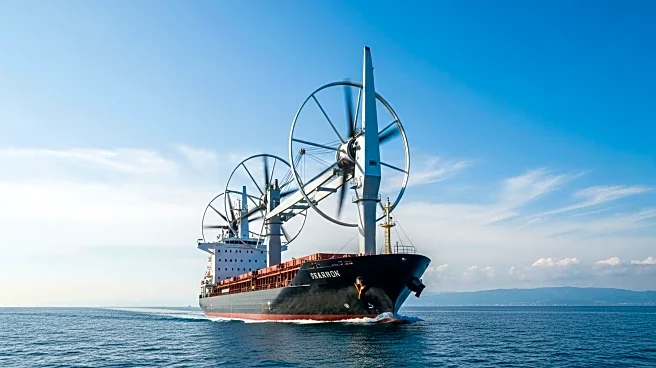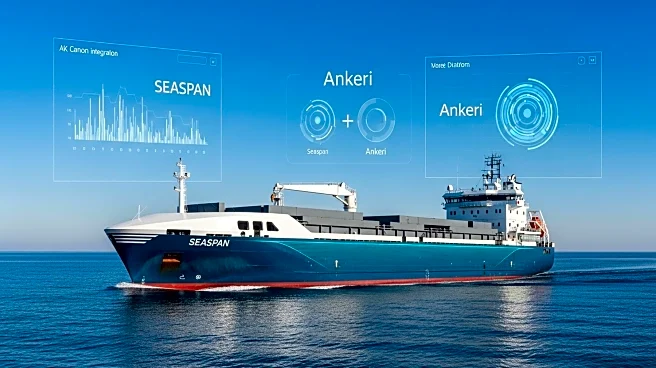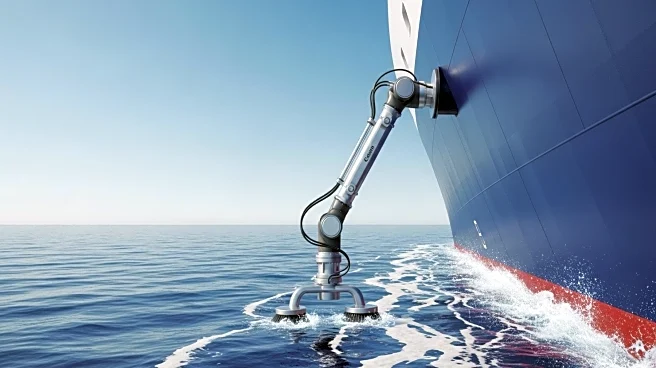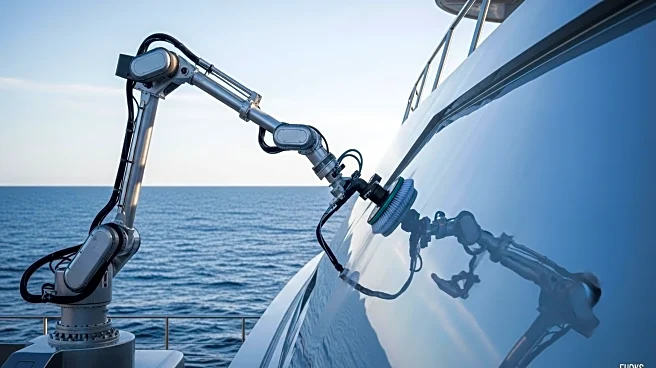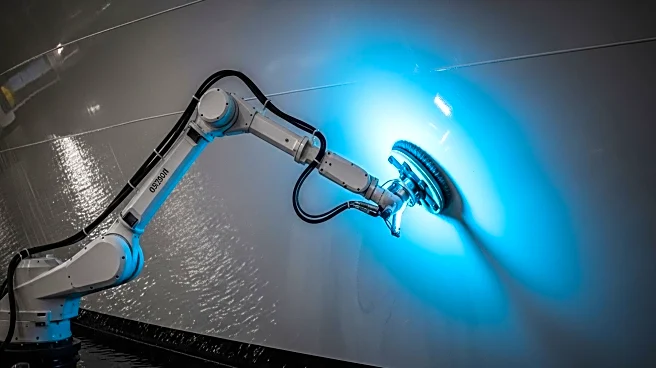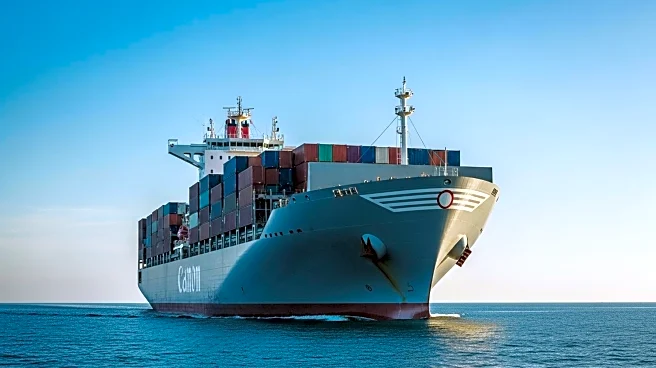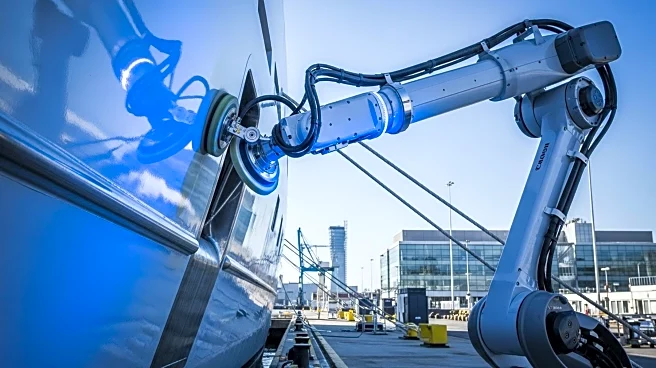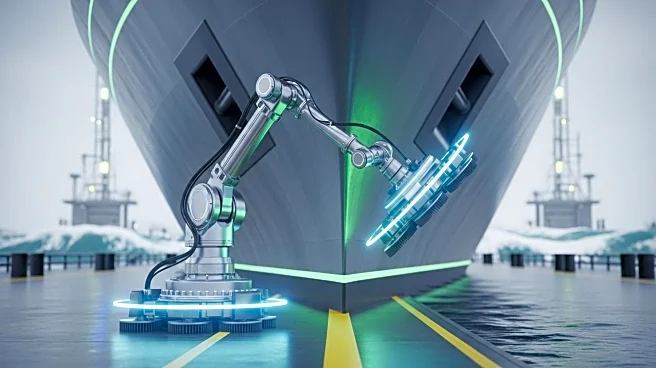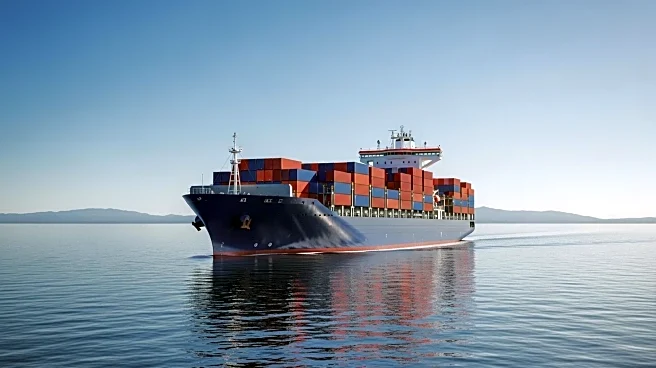What is the story about?
What's Happening?
U-Ming Marine Transport Corporation has successfully installed four Rotor Sails on its very large ore carrier (VLOC) vessel, Grand Pioneer. This marks the first instance of a Taiwanese shipowner adopting wind-assisted propulsion technology. The Rotor Sails, supplied by Anemoi Marine Technologies, were installed on the 325,000 deadweight tonne vessel at COSCO Zhoushan Shipyard during a scheduled dry-docking in September. The installation process, described as plug-and-play, involved lifting the 35-meter tall, five-meter diameter sails onto the vessel and securing them within 1.5 days.
Why It's Important?
The adoption of wind-assisted propulsion technology by U-Ming Marine Transport Corporation represents a significant step towards reducing carbon emissions in the maritime industry. By utilizing Rotor Sails, the Grand Pioneer is expected to achieve greater fuel efficiency, which can lead to reduced operational costs and a smaller environmental footprint. This move aligns with global efforts to enhance sustainability in shipping, potentially influencing other shipowners to consider similar technologies. The successful installation also highlights the growing collaboration between international companies, such as U-Ming and Anemoi Marine Technologies, in advancing eco-friendly maritime solutions.
What's Next?
Following the installation, U-Ming Marine Transport Corporation may monitor the performance of the Rotor Sails to assess their impact on fuel efficiency and emissions reduction. Positive results could encourage further adoption of wind-assisted propulsion across its fleet. Additionally, other shipowners might be inspired to explore similar technologies, potentially leading to broader industry shifts towards sustainable practices. The maritime sector could see increased investment in research and development of wind propulsion systems, fostering innovation and collaboration among global stakeholders.
Beyond the Headlines
The installation of Rotor Sails on the Grand Pioneer could have long-term implications for maritime regulations and standards. As more vessels adopt wind-assisted technologies, regulatory bodies might consider updating guidelines to accommodate these advancements. This could also spur discussions on incentivizing eco-friendly practices within the industry, potentially leading to policy changes that support sustainable shipping. Furthermore, the success of this project may encourage technological innovation, driving the development of more efficient and cost-effective solutions for reducing emissions in maritime transport.
AI Generated Content
Do you find this article useful?
